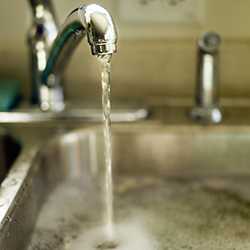Systematic Water Quality Assessment in Rural West Virginia

Approximately 13.1 million households rely on domestic wells as their primary source of drinking water. West Virginia—a predominantly rural state—has numerous residences that use privately owned wells as their drinking water source. While the U.S. Environmental Protection Agency (EPA) regulates public drinking water sources, it does not regulate private drinking water wells.
HSB’s goals were to quantify contaminant (i.e. analyte) levels in private well water and compare levels by geologic age (i.e. US Geological Survey’s divisions of geologic time) of three regions of West Virginia. We collected well water samples from 139 households. All water samples were analyzed for the EPA-recommended primary and secondary water analytes, as well as radon-222.
Elevated radon-222 levels were detected in 71.4% of samples disbursed throughout the three regions. Geologic age of the region was associated with both arsenic and radon-222 concentrations.
Our results suggest that rural communities should be targeted for education and outreach promoting private well water testing and mitigating any well water contamination that exceeds EPA-recommended levels.
- Page last reviewed: April 1, 2016
- Page last updated: April 7, 2016
- Content source:


 ShareCompartir
ShareCompartir